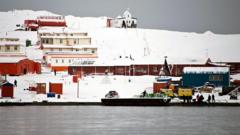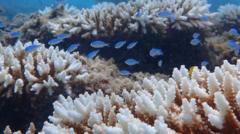The city of Ushuaia, known as the "end of the world," is experiencing a significant increase in tourist traffic heading to Antarctica, prompting both economic opportunities and strains for its local population and environment.
### The Booming Impact of Antarctic Tourism on Ushuaia: A Double-Edged Sword

### The Booming Impact of Antarctic Tourism on Ushuaia: A Double-Edged Sword
The surge in visitors to Ushuaia, Argentina, poses challenges for local residents and the environment while bringing economic growth.
Crowds of tourists bound for Antarctica have brought prosperity to Argentina’s southernmost city, but the boom is also squeezing locals and stressing the environment. About 90 percent of Antarctic cruises depart from Ushuaia, Argentina. Many of those passengers will spend a night or two in town, where they may take day trips to see penguins in places like nearby Martillo Island.
On a summer afternoon in January, the port of Ushuaia was bustling with cruise ships, with hundreds of wealthy tourists eager for their high-cost Antarctic adventures ranging from $15,000 to $18,000. The uptick in passengers has skyrocketed from around 35,500 a decade ago to an estimated 111,500 last year, with projections indicating a 10 percent increase this season.
This boom translates to economic growth for the city’s 83,000 residents who benefit from the influx of tourists. However, this prosperity is not without its complications. The surge in tourism is placing immense pressure on the city's resources, elevating the cost of living, and exacerbating housing shortages for local workers. The remote nature of Ushuaia, while a draw for visitors, complicates the situation further since local infrastructure has not kept pace with the demand.
Local leaders like Julio Lovece, president of the Ushuaia Foundation XXI, emphasize the need for sustainable tourism development that benefits the local community, expressing that the city sells an "aura" of being at the world’s edge rather than just natural attractions. However, balancing economic growth while preserving local identity and environment remains a critical challenge as Ushuaia faces this unprecedented wave of tourism.
On a summer afternoon in January, the port of Ushuaia was bustling with cruise ships, with hundreds of wealthy tourists eager for their high-cost Antarctic adventures ranging from $15,000 to $18,000. The uptick in passengers has skyrocketed from around 35,500 a decade ago to an estimated 111,500 last year, with projections indicating a 10 percent increase this season.
This boom translates to economic growth for the city’s 83,000 residents who benefit from the influx of tourists. However, this prosperity is not without its complications. The surge in tourism is placing immense pressure on the city's resources, elevating the cost of living, and exacerbating housing shortages for local workers. The remote nature of Ushuaia, while a draw for visitors, complicates the situation further since local infrastructure has not kept pace with the demand.
Local leaders like Julio Lovece, president of the Ushuaia Foundation XXI, emphasize the need for sustainable tourism development that benefits the local community, expressing that the city sells an "aura" of being at the world’s edge rather than just natural attractions. However, balancing economic growth while preserving local identity and environment remains a critical challenge as Ushuaia faces this unprecedented wave of tourism.


















